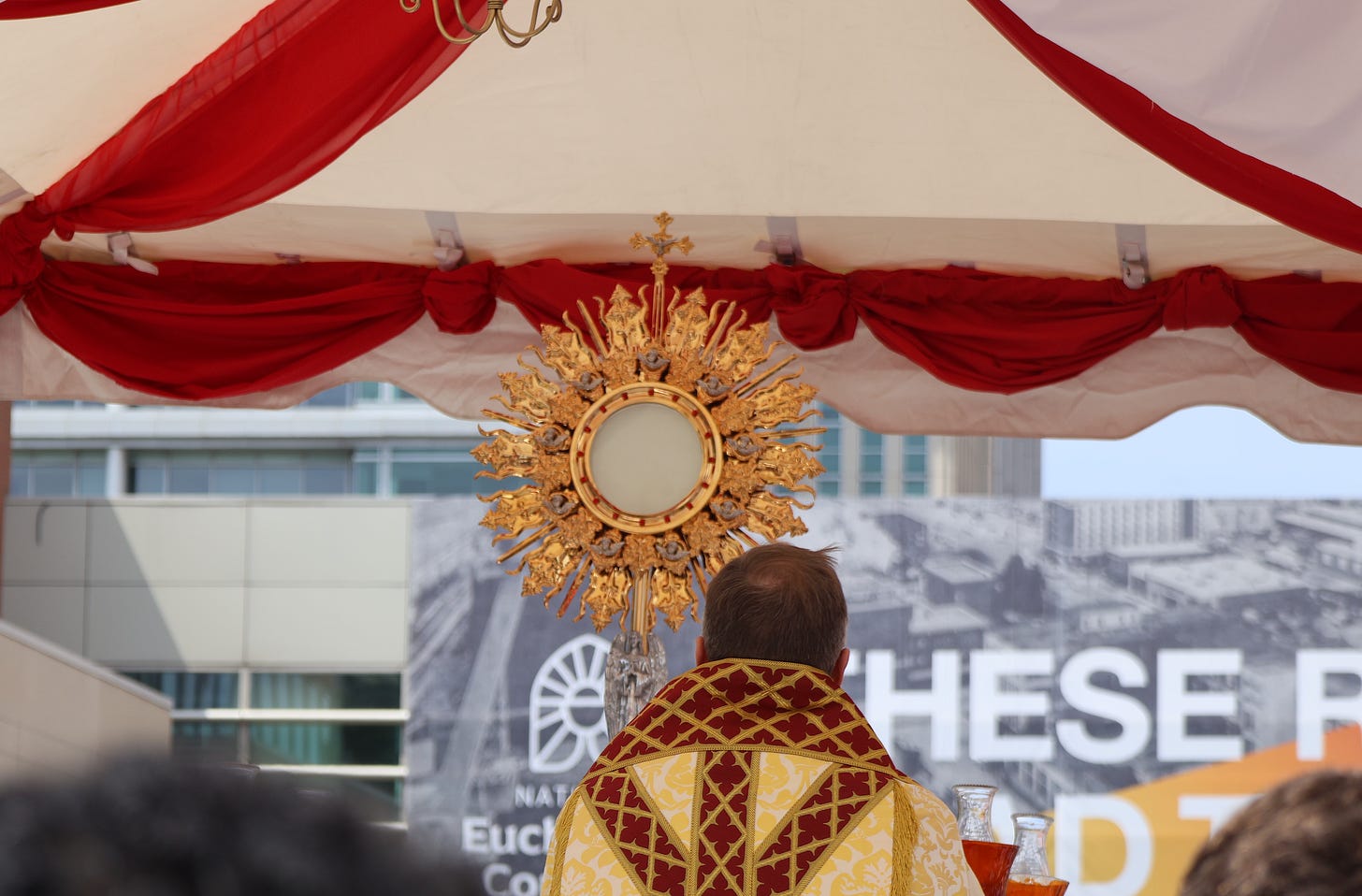‘Blessed be Jesus in the Most Holy Sacrament’ — The Eucharistic Congress, Days 3 and 4
NEC reporters' notebook
An estimated crowd of nearly 40,000 people took to the streets of Indianapolis Saturday to walk more than one mile, for a Eucharistic procession aimed at showing worship to God, unifying the Church, and giving a witness to Catholic love and devotion for Jesus Christ, present in the Eucharist.

